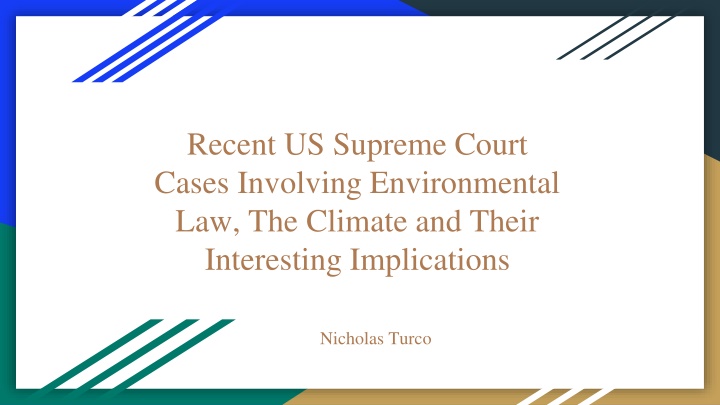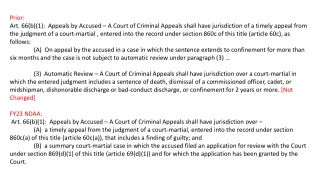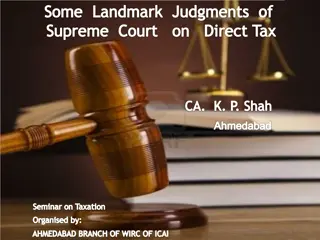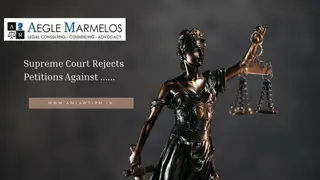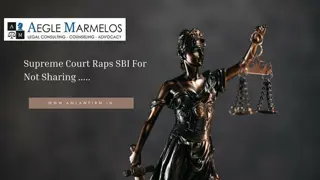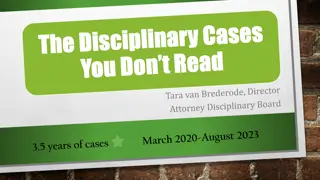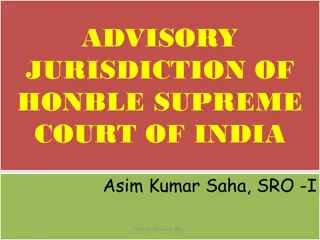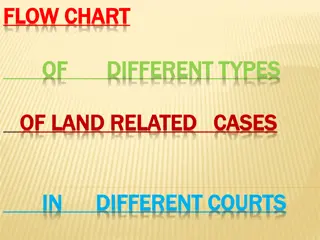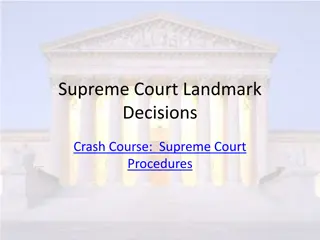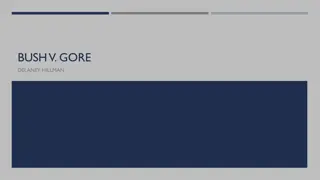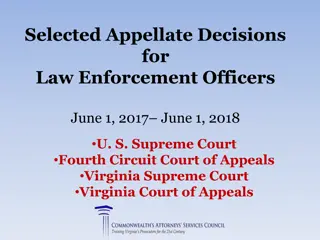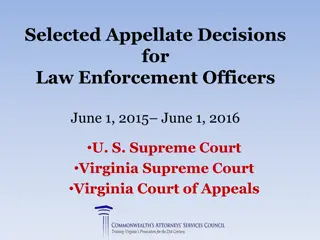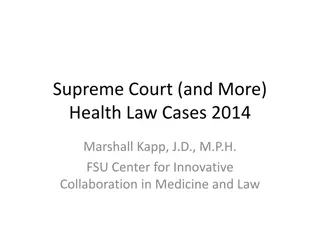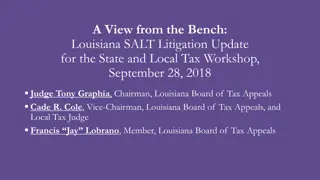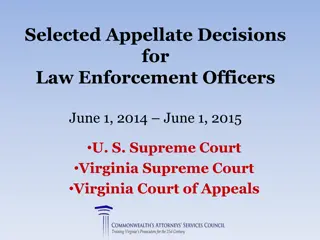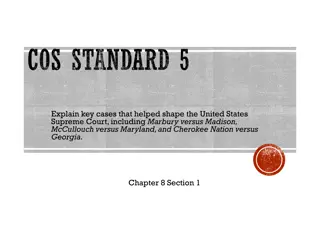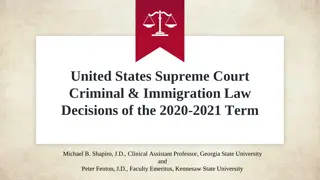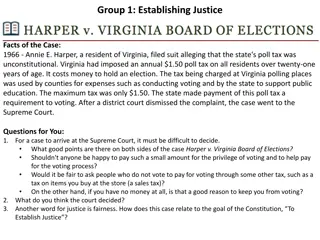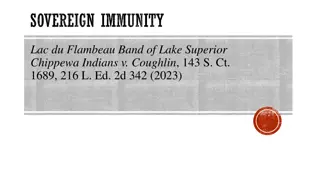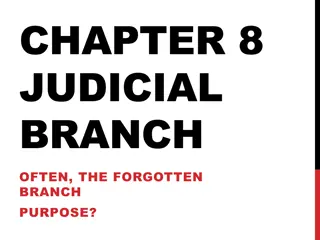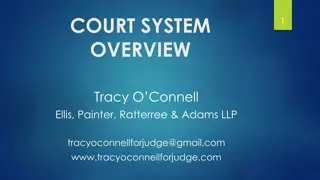Recent US Supreme Court Cases on Environmental Law & Climate
Recent US Supreme Court cases, County of Maui v. Hawaii Wildlife Fund and Atlantic Richfield Co. v. Christian, have significant implications for environmental law and regulation. The cases involve Clean Water Act requirements and potential liabilities at Superfund sites, shedding light on the evolving legal landscape in environmental protection.
Download Presentation

Please find below an Image/Link to download the presentation.
The content on the website is provided AS IS for your information and personal use only. It may not be sold, licensed, or shared on other websites without obtaining consent from the author.If you encounter any issues during the download, it is possible that the publisher has removed the file from their server.
You are allowed to download the files provided on this website for personal or commercial use, subject to the condition that they are used lawfully. All files are the property of their respective owners.
The content on the website is provided AS IS for your information and personal use only. It may not be sold, licensed, or shared on other websites without obtaining consent from the author.
E N D
Presentation Transcript
Recent US Supreme Court Cases Involving Environmental Law, The Climate and Their Interesting Implications Nicholas Turco
County of Maui v. Hawaii Wildlife Fund, No. 18-260, 590 U.S. Question: Weather the Clean water act "requires a permit when pollutants originate from a point source but are conveyed to navigable waters by a nonpoint source," here, "groundwater."(18-260, 590 U.S.). Plaintiff: The environmental organization bringing the suit contended that a permit is always required under such circumstances to avoid a major circumvention of CWA regulatory jurisdiction (Frank 2020). Defendant: The County of Maui (supported by the Trump Administration), on the other hand, argued that the intervening injection of treated sewage effluent into groundwater aquifers necessarily and fully removes such discharges from CWA permit jurisdiction (Frank 2020). Holding: The Clean Water Act requires a permit when there is a direct discharge of a pollutant from a point source into navigable waters or when there is the functional equivalent of a direct discharge (Oyez).
Implications 1. Water that travels through groundwater and the Ocean is regulated under the EPA and the Clean Water Act as point source pollution. 1. Given advancements in science we will likely see tighter standards around water pollution, as is evident in the fairly traceable language used by the Hawaii Wildlife Fund.
Atlantic Richfield Co. v. Christian. 590 US _ (2020) Facts: In 2008, landowners within the Anaconda Superfund site sued Atlantic Richfield in Montana state court, alleging that the smelter operations between 1884 and 1980 had caused damage to their properties (Oyez). Question: Is a landowner at a Superfund site a potentially responsible party that must seek EPA approval under 42 U.S.C. 9622(e)(6) of the Comprehensive Environmental Response, Compensation and Liability Act before engaging in remedial action Plaintiff: Because arsenic and lead are hazardous substances that have come to be located on the landowners properties, the landowners are potentially responsible parties. (590 US _ (2020). Defendant: 1)The CERCL Act s six-year limitations period for recovery of remedial costs ended so landowners are not responsible. 2) They comprise Innocent Landowners. . Holding: the Montana Supreme Court erred in holding that the landowners in this case were not potentially responsible parties under CERCLA and thus did not need the Environmental Protection Agency s approval to take remedial action (Oyez).
Implications 1) Settlements, however, are the heart of the Superfund statute. Section 122(a) of the Act commands EPA to proceed by settlement [w]henever practicable and in the public interest . . . in order to expedite effective remedial actions and minimize litigation. And EPA s efforts to negotiate settlement agreements and issue orders for cleanups account for approximately 69% of all cleanup work currently underway. Pp. 13 21. 2) Yet under the landowners interpretation, property owners would be free to dig up arsenic-infected soil and build trenches to redirect lead contaminated groundwater without even notifying EPA, so long as they have not been sued within six years of commencement of the cleanup. Congress did not provide such a fragile remedy for such a serious problem (590 US _ (2020).
McGirt v. Oklahoma 140 S. Ct. 2452 (2020) Holding: An 1856 treaty promised that no portion of Creek lands would ever be embraced or included within, or annexed to, any Territory or State and that the Creek Nation would have the unrestricted right of self- government, with full jurisdiction over enrolled Tribe members and their property (Oyez).
McGirt v. Oklahoma 140 S. Ct. 2452 (2020) Environmental Implications: The ability of states to regulate Native American water, fishing and hunting rights on tribal lands in the future appears questionable at best, given the broad language of the McGirt decision (Frank 2020). Specific attention to the Language: 1) 2) 3) Full Jurisdiction Enrolled Tribal Members and Their Property Unrestricted right of self government
Citations: says, Barry Epstein. The U.S. Supreme Court s Most Important 2020 Environmental Law Decisions. Legal Planet, 30 Dec. 2020, https://legal-planet.org/2020/12/29/the-u-s-supreme-courts-most-important-2020-environmental-law- decisions/. {{meta.PageTitle}}. {{meta.SiteName}}, https://www.oyez.org/cases/2019/18-9526. Accessed 21 Apr. 2021. {{meta.PageTitle}}. {{meta.SiteName}}, https://www.oyez.org/cases/2019/18-260. Accessed 21 Apr. 2021. {{meta.PageTitle}}. {{meta.SiteName}}, https://www.oyez.org/cases/2019/17-1498. Accessed 21 Apr. 2021. County of Maui v. Hawaii Wildlife Fund, No. 18-260, 590 U.S. McGirt v. Oklahoma, 591 U.S. County of Maui v. Hawaii Wildlife Fund, No. 18-260, 590 U.S
